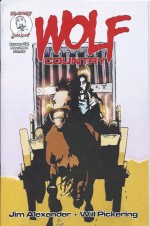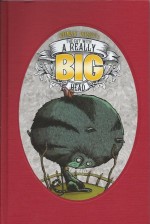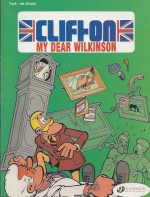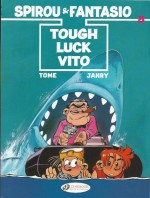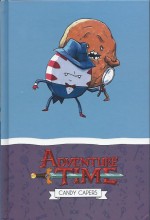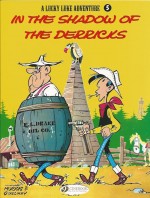
By Jean-Yves Ferri & Didier Conrad, translated by Anthea Bell (Orion Books)
ISBN: 978-1-4440-1167-8
Asterix began life in the last year of the 1950s and has become part of the fabric of French life. His adventures touched billions of people all around the world for five and a half decades and for all of that time his astounding adventures were the sole preserve of originators Rene Goscinny and/or Albert Uderzo.
After nearly 15 years as a weekly comic serial subsequently collected into book-length compilations, in 1974 the 21st saga – Asterix and Caesar’s Gift – was the first to be released as a complete original album prior to serialisation. Thereafter each new album was an eagerly anticipated, impatiently awaited treat for legions of devotees, but none more so than this one, created by Uderzo’s handpicked replacements – scripter Jean-Yves Ferri (Fables Autonomes, La Retour à la terre) and illustrator Didier Conrad (Les Innomables, Le Piège Malais, Tatum) – who landed the somewhat poisoned chalice after he retired in 2009.
Happily the legacy is in safe hands, and this first book at least has been meticulously overseen by Uderzo every step of the way…
Whether as an action-packed comedic romp with sneaky, bullying baddies getting their just deserts or as a punfully sly and witty satire for older, wiser heads, the new tale is just as engrossing as the established canon and English-speakers are still happily graced with the brilliantly light touch of translator Anthea Bell who, with former collaborator Derek Hockridge, played no small part in making the indomitable little Gaul so palatable to English sensibilities.
As you already know, half of the intoxicating epics are set in various exotic locales throughout the Ancient World, whilst the rest take place in and around Uderzo’s adored Brittany where, circa 50 B.C., a little hamlet of cantankerous, proudly defiant warriors and their families resisted every effort of the mighty Roman Empire to complete the conquest of Gaul.
Although the country is divided by the notional conquerors into provinces Celtica, Aquitania and Amorica, the very tip of the last named stubbornly refuses to be pacified. The Romans, utterly unable to overrun this last bastion of Gallic insouciance, are reduced to a pointless policy of absolute containment – and yet the Gauls come and go as they please. Thus a tiny seaside hamlet is permanently hemmed in by heavily fortified garrisons Totorum, Aquarium, Laudanum and Compendium, filled with veteran fighters who would rather be anywhere else on earth than there…
Their “prisoners†couldn’t care less; daily defying and frustrating the world’s greatest military machine by simply going about their everyday affairs, protected by a miraculous magic potion brewed by resident druid Getafix and the shrewd wits of diminutive dynamo Asterix and his simplistic, supercharged best friend Obelix…
Astérix chez les Pictes was released in October 2013, simultaneously hurtling off British shelves as Asterix and the Picts, and opens in February with snow piled deep in the village and all around its weathered stockade. Eager to avoid the usual spats, snipes and contretemps of their fellows, doughty little Asterix and his affable pal Obelix go for a bracing walk on the beach and discover lots of flotsam and jetsam: Roman helmets, old amphorae, a huge cake of ice with a strange tattooed giant inside…
Swiftly taking their find back to their fascinated friends, the pals are informed by Getafix that the kilted fellow appears to be a Pict from distant Caledonia on the other side of the sea – another tribe ferociously resistant to Roman rule.
The find polarises the village: the men are wary and distrustful but the women seem to find the hibernating Hibernian oddly fascinating. So great is the furore over the discovery that nobody bats an eyelid when Roman census-taker Limitednumbus sidles into the village eager to list everything going on and everyone doing it…
Before long Getafix has safely defrosted the giant but the ordeal has left the iceman speechless. That only makes him more interesting to the wowed womenfolk…
A smidgeon more Druid magic gives him a modicum of voice – although very little of it is comprehensible – and before long Chief Vitalstatistix orders his mismatched go-to guys to take ship and bring the bonnie boy back to his own home, wherever it is.
…And with the gorgeous tattooed giant gone, the bedazzled village women will go back to normal again. At least that’s the Chief’s fervent hope…
After tearful farewells (from about half of the village) the voyagers head out and are soon encouraged when the Pict suddenly regains his power of speech. In fact he then can’t stop gabbing, even when the Gauls meet their old chums the Pirates and indulge in the traditional one-sided trading of blows.
The reinvigorated hunk is called Macaroon and soon is sharing his tale of woe and unrequited love even as the little boat steadily sails towards his home.
Macaroon lives on one side of Loch Androll and loves Camomilla, daughter of the chieftain Mac II. However ambitious, unscrupulous rival chieftain Maccabaeus from across the water wanted to marry her and cunningly disposed of his only rival by tying him to a tree-trunk and casting him into the freezing coastal waters…
Meanwhile in Caledonia, a Roman expeditionary force led by Centurion Pretentius has arrived and makes its way to a rendezvous with a potential ally: a chief of the Maccabees clan willing to invite the devious, all-conquering empire into the previously undefeated land of the Picts…
Once Macaroon and his Gallic comrades reach home turf they are feted by his amazed and overjoyed clan whilst across the loch the traitor is trying to placate his own men who have witnessed the giant’s return and believe him a ghost…
Villainous Maccabaeus is only days away from becoming King of all the Picts. He even holds captive Camomilla – whom he will wed to cement his claim – and with the Romans to enforce his rule looks forward to a very comfortable future. He will not tolerate anything ruining his plans at this late stage…
Things come to crisis when Macaroon has a sudden relapse and the Druid’s remedy to restore him is lost at the bottom of a loch thanks to the playfulness of the tribe’s colossal and revered water totem “the Great Nessieâ€.
When Asterix and Obelix helpfully offer to retrieve it they discover a tunnel under the loch which leads into the Maccabees fortress which is simply stuffed with lots of lovely Romans to pummel…
With the jig up and Camomilla rescued, the scene is set for a spectacular and hilarious final confrontation that will set everything to rights in the tried-and-true, bombastic grand old manner…
Fast, funny, stuffed with action and hilarious, tongue-in-cheek hi-jinks, this is another joyous rocket-paced rollercoaster for lovers of laughs and devotees of comics to accept into the mythic canon.
© 2013 Les Éditions Albert René. English translation: © 2013 Les Éditions Albert René. All rights reserved.


